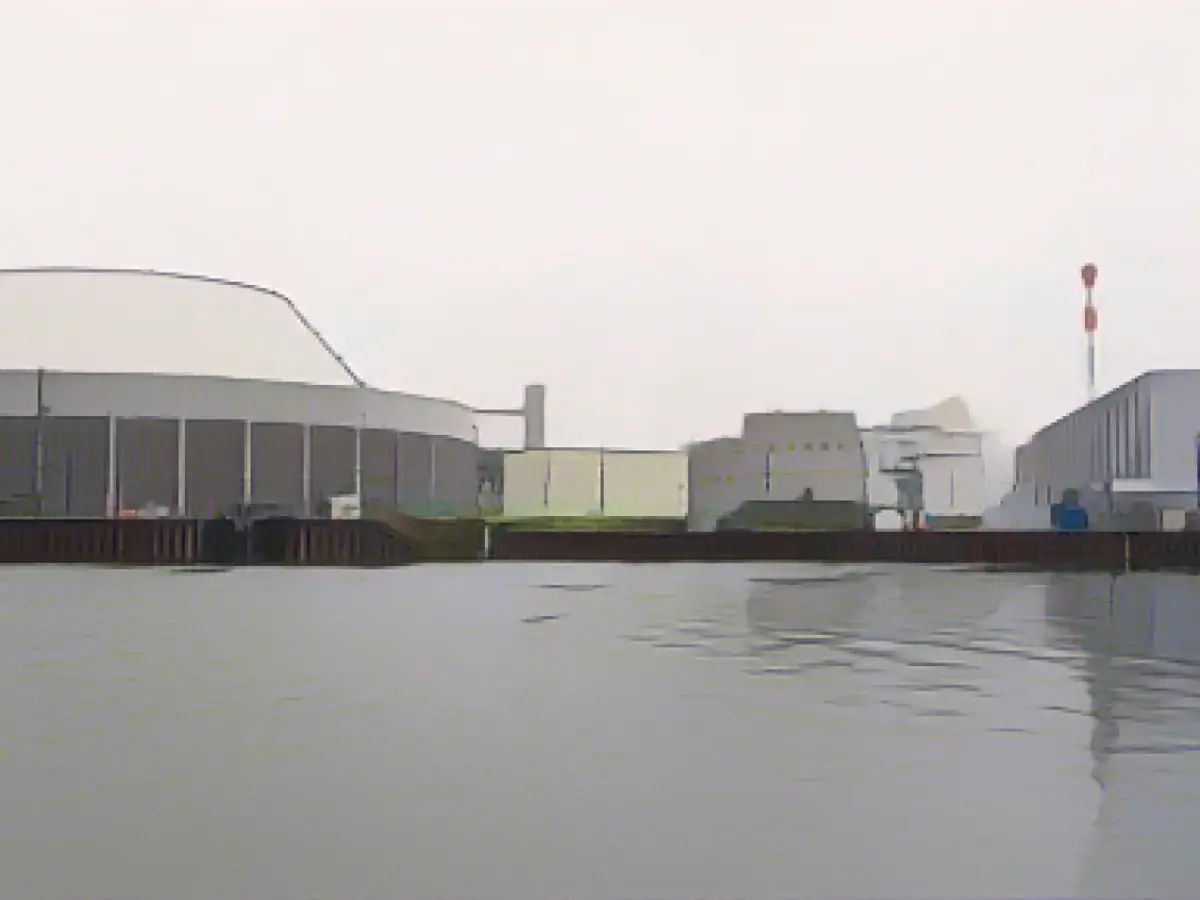Nuclear phase-out - The nuclear age is also being dismantled in Neckarwestheim
Following the end of nuclear power production in Germany, EnBW is right on schedule with the dismantling. The energy company was the last nuclear power plant (NPP) in Germany to take the Neckarwestheim 2 reactor off the grid on April 15 at 11:59 pm.
According to a spokesperson, the 193 fuel elements were removed from the reactor pressure vessel directly in the days following the shutdown and transferred to a storage pool. "There the fuel elements are under water, are cooled and decay for around three years before they can be placed in suitable transport and storage containers and transported to the state interim storage facility on site." By mid-August, the nuclear systems - for example pipelines - had been decontaminated with the help of chemicals.
The first separation and dismantling work is then due to start in the new year. The main coolant lines will then be dismantled and the reactor pressure vessel internals dismantled, the spokesperson explained.
Nuclear power plant provided one sixth of the power requirement
As part of the nuclear phase-out following the nuclear disaster in Fukushima in 2011, the Neckarwestheim 2 nuclear power plant in the district of Heilbronn and two reactors in Lower Saxony and Bavaria were the last reactors in Germany to cease production in mid-April. This marked the end of nuclear power production in the southwest after almost 55 years.
With an average annual production of around eleven billion kilowatt hours, Neckarwestheim 2 had covered around one sixth of the electricity demand in Baden-Württemberg, according to EnBW. The reactor was the latest German nuclear power plant to be connected to the grid in 1989 and produced a total of around 375 billion kilowatt hours of electricity.
The Ministry of the Environment had already approved its dismantling a few days earlier. There is also a clear framework for this in the form of laws and regulations. The nuclear supervisory authority monitors compliance with these.
A large part can be reused
All five EnBW nuclear power plants are now being dismantled. According to the spokesperson, this is being done from the inside out: the focus is on the technical facilities. The building structures, on the other hand, remain largely intact for the time being. Once the nuclear dismantling process has been completed after around 10 to 15 years, they will either be used for other purposes or demolished.
Less than one percent of the waste is radioactive. Around one percent will be disposed of conventionally. The rest can be reused. There are waste processing centers in Neckarwestheim and Philippsburg (Karlsruhe district) to decouple dismantling and disposal from each other. For dismantling, EnBW relies on existing personnel and their know-how.
For example, the knowledge required to maintain turbines also helps with their dismantling. The Karlsruhe-based energy supplier expects the dismantling and disposal of the five nuclear power plants to cost around nine billion euros.
In Block 1 in Neckarwestheim, work began this year on dismantling the concrete structures that used to surround the reactor pressure vessel and were intended to shield against radiation. It is expected that around 1000 tons of concrete will be removed by at least the beginning of 2025. Using so-called wire and band saws, the pieces will be cut up and packed into containers, which will be filled with concrete to improve stability. Their final destination is the state-owned "Schacht Konrad" repository in Lower Saxony. Large parts such as the steam generators and the reactor pressure vessel had previously been removed. All plant components in the turbine building have been completely dismantled.
Info about Neckarwestheim 2 nuclear power plant Shutdown notice
Read also:
- A clan member is punished here
- Traffic lawyer warns: Don't talk to the police!
- Will he be convicted as Jutta's murderer after 37 years?
- He also wanted to kill his cousin
- The dismantling of Neckarwestheim 2, the last operational nuclear power plant (NPP) in Germany, is progressing according to schedule, following the nation's nuclear phase-out.
- EnBW, the energy company responsible for the Neckarwestheim 2 NPP, successfully removed 193 fuel elements from the reactor pressure vessel after its shutdown on April 15.
- Once the fuel elements have decayed in a storage pool for around three years, they will be transported and stored in suitable containers within the district of Heilbronn, Germany.
- The nuclear disaster in Fukushima in 2011 led to a nationwide phase-out of nuclear power, resulting in the shutdown of Neckarwestheim 2 and other reactors in Lower Saxony and Bavaria by mid-April.
- With an annual production of around eleven billion kilowatt hours, Neckarwestheim 2 provided approximately one sixth of the electricity demand in the German state of Baden-Württemberg.
- In compliance with regulations and under the supervision of the nuclear supervisory authority, the dismantling process of all five EnBW nuclear power plants is being carried out meticulously.
- EnBW anticipates that the dismantling and disposal of the five nuclear power plants will cost around nine billion euros.
- Preliminary dismantling work on the concrete structures surrounding the reactor pressure vessel in Block 1 of Neckarwestheim 2 has already begun, with around 1000 tons of concrete expected to be removed by 2025.
Source: www.stern.de








